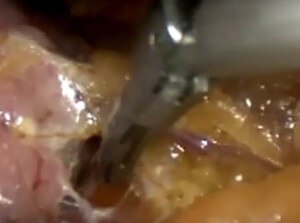FAQs
Read the FAQs to get all your queries answered.No, you might be paying more for the surgeries initially, but due to the fact that, patients stay in the hospital is less, medication is less and there is faster return to work, which make these surgeries cost effective.
No, all these surgeries are basically the same as conventional surgeries but only the “access” into the abdomen is different. While previously the surgeon used big cuts on the body to do any surgery, a minimal access surgeon would do the same job through small holes which not only painless after the surgery but are devoid of ugly scarring.
These surgeries can be performed in everyone, even extremes of age! They are perfectly safe and sometimes safer as they provide early recovery and movement after the surgery.
Usually, one or two days is more then what is needed after such surgeries. Sometimes, these surgeries can even be done as day care.
Any surgery done through Small incisions is known as Minimal Access Surgery. Usually the term is used for the surgeries that are done through small holes in the abdomen known as ‘ports’, through which long instruments are passed into the abdomen and operation is conducted under vision which is provided by a high resolution camera attached to a telescope passed into the abdomen through another port.
Like any other surgery, there are complications, fortunately these are few and not so severe. Patients undergoing these surgeries are adviced to talk to their surgeon about these at length, before undergoing the operation.
Most of the surgeries within the abdomen can be conducted through this route. As this is an evolving subject, more and more surgeries are added into the list every day.
- Laparoscopic Cholicystectomy is the most commonly performed surgery in this group (i.e removal of the Gall Bladder) Other commonly performed surgeries are :
- Laparoscopic Appendicectomy( removal of appendix)
- Laparoscopic TEP (totally extraperitonial repair) for inguinal hernias
- Laparoscopic Ventral hernia repair for incisional, umbilical hernias etc.
- Laparoscopic Hemicolectomy / total colectomy
- Diagnostic laparoscopies for unexplained pain abdomen
- Laparoscopic Gynecological surgeries
- Laparoscopic Pediatric surgeries like herniotomy
- Laparoscopic Varicocelectomy
- Laparoscopic Fundoplication
- Laparoscopic Splenectomy
- Laparoscopic Peptic perforation closure
- Laparoscopic Kidney surgeries like Nephrectomy (Removal of the kidney) , Pylolithotomy (removal of stones from the kidney), Uretrolithotomy (removal of stones from the ureter)
- Laparoscopic Obesity surgery
- Laparoscopic Gastric banding
- Laparoscopic Gastric Bypass surgery
- Laparoscopic Sleeve Gastractomy
The biggest advantage coming out of these surgeries is relief of pain as these sensations are directly proportional to the incisions on the abdomen and thus the smaller the incision, the lesser the pain. Due to less pain, the use of pain killer and other medication is less. Not only this, Minimal Access surgeries also translates into faster recovery and faster return to work with lesser hospital stay.






